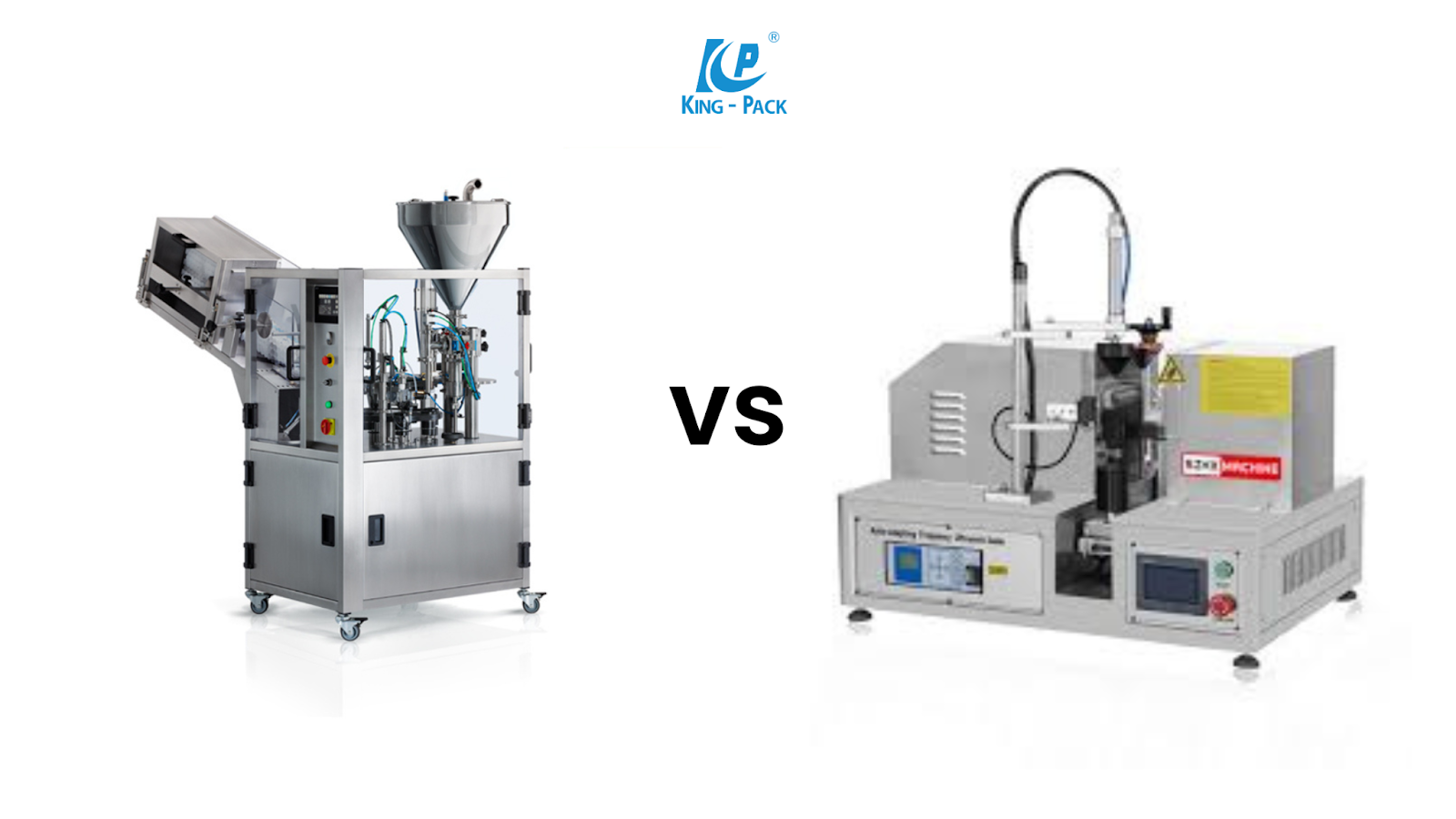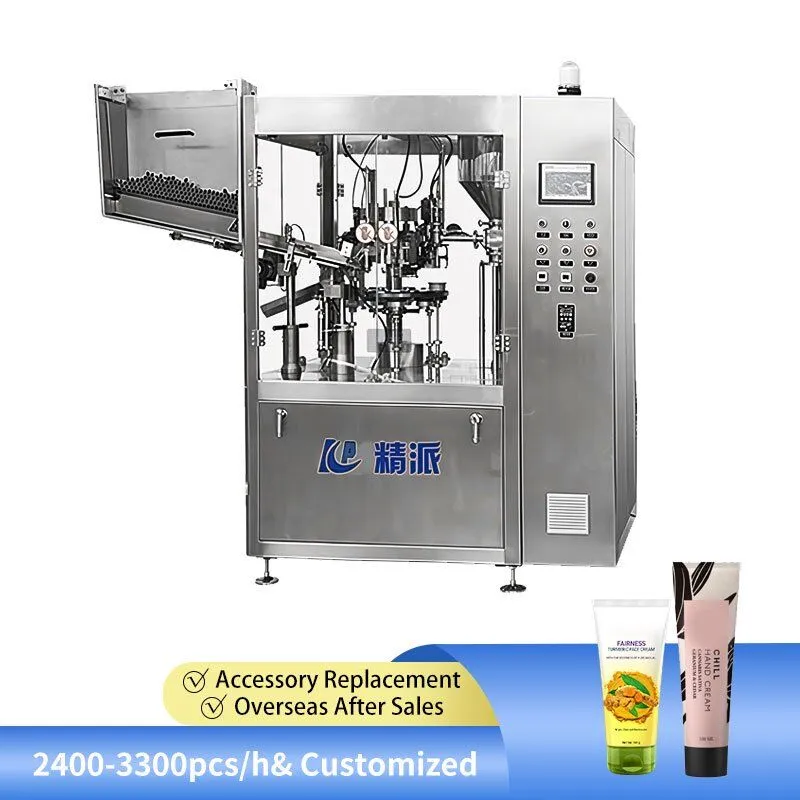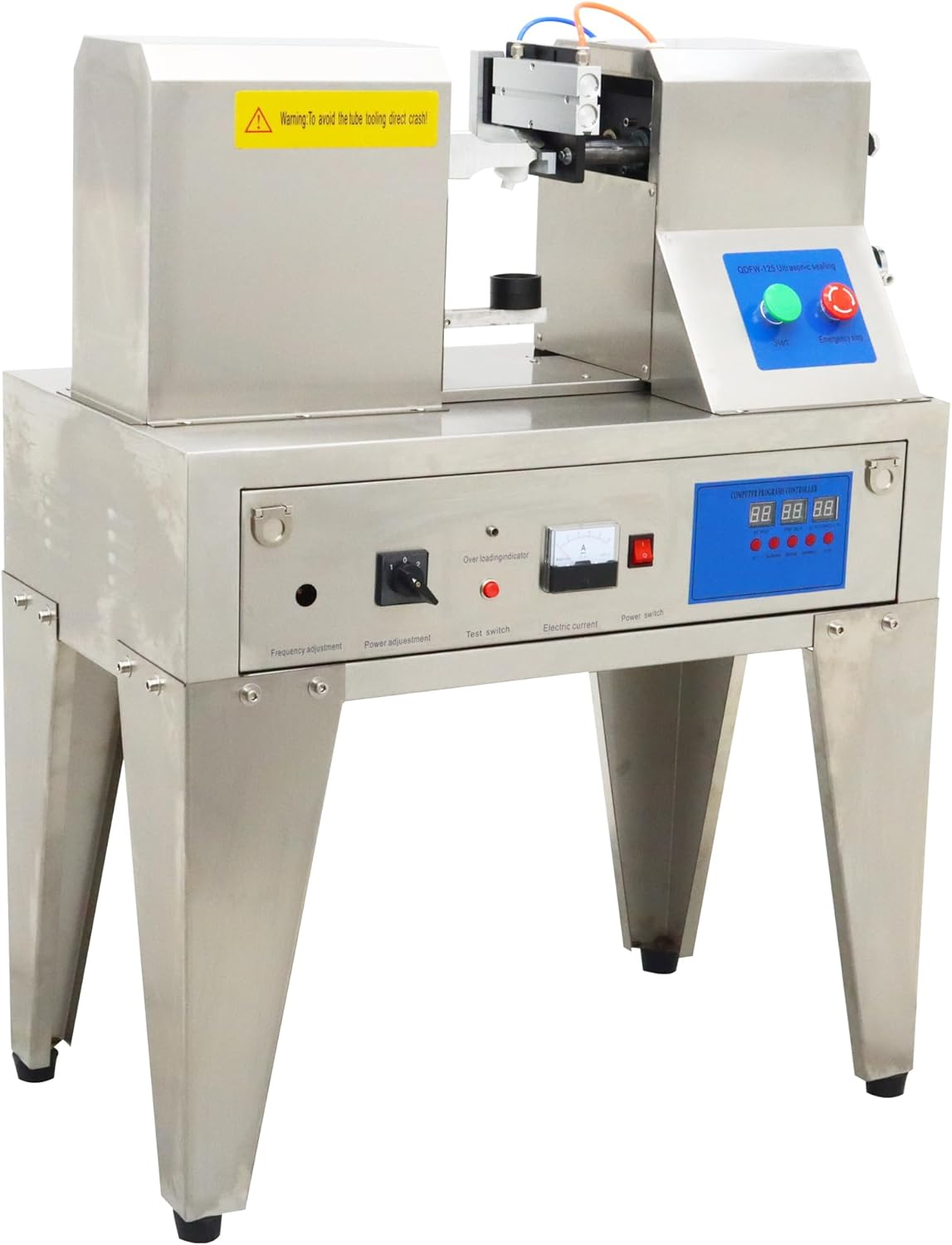What Differentiates Tube Filling and Sealing Machine from Ultrasonic Tube Sealing Machine?

Packaging machinery is no small affair. Globally, the market of tube filling machines is projected to soar to USD 2.2 billion by 2034 with a CAGR of nearly 5.9%.
But that’s not the only option for tube sealing as alternatives like ultrasonic are paving their way in the industries. Clearly, the race is on to develop smarter, faster, and more efficient ways to package creams, lotions, ointments, and pastes.
With these qualified options, making an informed choice between conventional tube filling & sealing systems and ultrasonic tube sealing technology can be difficult. And it’s an important choice too. Whether you’re in pharmaceuticals, cosmetics, food or beyond, the machinery you pick has the power to affect your speed, product integrity, and bottom-line performance.
In this article, we’ll unpack both technologies and point to the pros, cons, and use-cases for each. The goal is to help you make the right choice.
What is a Conventional Tube Filling and Sealing Machine?

Conventional tube filling and sealing machines have been the backbone of packaging lines for decades. They are widely used in cosmetics, pharmaceuticals, food, and personal care industries. Creams, gels, pastes, and lotion are packed using this machine.
At their core, these machines operate on a heat sealing method and it’s made of stainless steel. It relies on temperature and pressure that’s determined using a control panel to close the open end of the tube securely. Usually, the control system comes with a touch screen for ease of control.
Working Principle
The principle behind a conventional plastic tube heat sealing machine or an aluminium tube filling machine is straightforward.
The thermo heat sealing device is designed to first position an empty tube under filling nozzles using a tube holder. A precise dose of product is dispensed. Then, the tube is moved to the sealing section.
For plastic tubes, the sealing is achieved through thermal conduction. The machine applies heat to the tube’s open end. It softens the thermoplastic material. A pair of sealing jaws then press the softened layers together. This leads to compressed air which gives the benefit of airtight/leak-proof closure. In most models, cooling jaws immediately follow to solidify the seal and maintain the tube’s shape.
For aluminium tubes, the method is slightly different. Since aluminium does not melt in the same way as plastic, mechanical folding and crimping device is used. After filling capacity is reached, the machine folds the tube’s end in a series of tight crimps. It’s often combined with heat or adhesive if additional sealing strength is required. This makes aluminium tubes especially suitable for sensitive ointments where sterility is critical.
In both cases, the machines ensure accuracy, speed, and reliability while also maintaining consistent product quality.
Types & Applications
As you observed in the method, the application of the machine varies based on the material of the tube and the material it’s used for filling. Mostly, the conventional tube filling equipment is highly versatile and can handle different types.
Let’s take a look at some of its types based on tube’s material:
- Plastic tube filling machines are best suited for everyday cosmetic and personal care products such as shampoos, face washes, gels, and toothpastes.
- Aluminium tube filling machines are common in pharmaceutical and industrial settings. Here, they handle things like ointments, adhesives, pastes, or creams. aluminium is preferred due to its strong barrier that protects content from light, air, and moisture.
Now, let’s look at some types based on the item that needs to be filled:
- A cosmetic tube filling machine is able to handle everything from lightweight lotions to thicker creams. It allows for quick changeovers between tube diameter/size, making it ideal for fast-moving cosmetic lines.
- The lotion tube filling machinery is optimized for less viscous materials. This could include liquid products like body lotions, sunscreens, and serums. These machines focus on gentle handling to maintain texture while still sealing tubes securely.
- Cream tube filling machines are designed for medium-to-high viscosity products such as facial creams or moisturizers. It prevents air bubbles.
- Ointment filling machine is suitable where sterility and patient safety is the top priority. These machines integrate features like laminar airflow.
The broad application range makes conventional tube sealing systems indispensable in multiple sectors.
Advantages
One of the biggest advantages of a conventional tube filling and sealing machine is material flexibility. It can work with plastic, laminate, and aluminium tubes. The versatility reduces the needs for specialized machinery, especially if you have to handle different product lines.
While working with some machines, you get the benefits. However, it might cause more future cost as spare parts could not be available. But for a tube filling and sealing machine, that’s not the case as it’s time-tested. It is used worldwide so spare parts and skilled operators can be found easily.
And if scalability is your concern, it has got that covered too. Businesses can start with semi-automatic tube filling machines and later upgrade to fully automated filling machines or even high-speed tube filling machines as production demand grows.
In short, conventional tube filling and sealing machines remain the industry standard because they offer flexibility and reliability. However, many new technologies like ultrasonic sealing are also making waves in the industry.
What is an Ultrasonic Tube Sealing Machine?

Ultrasonic tube sealing machines represent a newer generation of packaging technology. Unlike conventional systems that rely on external heat or mechanical folding, ultrasonic machines use high frequency energy to create precise seals.
Working Principle
The way an ultrasonic tube filling sealing machine or an ultrasonic plastic tube sealing machine works is fundamentally different from heat sealing. Instead of applying direct thermal conduction, the machine uses a specially designed system that generates ultrasonic vibrations.
When the tube holder with a filled tube is positioned at the sealing station, these ultrasonic vibrations are applied to the open end of the tube. The rapid movement causes friction between the tube’s inner layers. This generates localized heat within the material. So unlike conventional sealing, the heat is not applied externally; it is produced internally at the molecular level.
As the thermoplastic material softens, pressure from sealing jaws bonds the layers together. The process is incredibly quick (often taking less than a second).
Because the heat is short-lived, the product inside the tube remains unaffected. Therefore, the product inside the tube remains unaffected, even for formulations sensitive to temperature changes.
Applications & Suitable Materials
Ultrasonic machines are most effective with thermoplastic tubes such as LDPE, HDPE, and laminated variants. Their ability to seal without long-term heat exposure makes them suitable for packaging formulations like organic creams, medicated ointments, and serums where overheatedness can cause damage.
In cosmetics, ultrasonic sealing is popular for premium products like facial creams and eye serums. In pharma, ultrasonic machines are valued for their sterile and tamper proof seals.
Although ultrasonic machines are not typically used with aluminum tubes, they are highly compatible with a wide range of plastic and laminate tubes, which represent the majority of consumer packaging today.
Advantages
Like we mentioned in the working principle, the low heat impact is by far the most important advantage of ultrasonic tube sealing machines. Since the sealing energy is concentrated only at the tube’s edges, the contents remain cool and stable.
Another significant advantage is speed and efficiency. Ultrasonic sealing is faster than conventional heat sealing as it eliminates the time for preheating and cooling cycles.
Energy efficiency is also an important pro. Unlike traditional systems that keep heating elements powered all the time, ultrasonic machines’ power consumption only happens during the actual sealing process. This not only lowers energy bills but also contributes to more sustainable production practices.
Finally, ultrasonic sealing produces clean and reliable seals with minimal defects. This is definitely a pro for brands that prioritize aesthetics and packaging quality.
Key Differences Between Heat Sealing and Ultrasonic Sealing
The goal of both methods is the same: make a secure closure that protects the product inside. However, the way they reach that goal differs significantly.
Sealing Method & Technology
First, there’s the primary distinction i.e., how the seal is formed. Heat sealing relies on external thermal conduction. The machine applies heat to the tube’s filling head, softens the material, and presses to close it.
Ultrasonic sealing technology, on the other hand, uses high frequency vibrations to generate frictional heat within the material itself. Instead of heating the outer surface, the energy penetrates the layers of thermoplastic. This creates a localized melt that bonds quickly under pressure.
Material Compatibility
Heat sealing is versatile. It can handle a wide variety of tube types like plastic, laminated, and aluminum tubes. This flexibility makes it attractive for companies that deal with multiple product categories like food, pharmaceuticals, cosmetic, etc.
Since ultrasonic sealing is a specialized method, it works best with thermoplastic tubes such as LDPE, HDPE, and laminated plastic. aluminium tubes are not compatible. So it is an efficient choice for manufacturers that rely heavily on plastic-based packaging, but not a suitable choice for those who rely on a mix of plastic and metal tubes or metal only.
Speed & Efficiency
When it comes to production speed, ultrasonic sealing generally has the edge. Since there’s no need for preheating or cooling cycles, the process is faster. A fully automatic ultrasonic tube sealing machine can seal tubes in under a second.
Conventional heat sealing is slightly slower due to the heating and cooling phases. However, modern high speed tube filling machines have optimized these steps to achieve impressive outputs as well.
For very large-scale operations, ultrasonic sealing may offer a marginal advantage, but for most industries, both technologies can deliver the required speed when using advanced automated filling.
Product Safety & Quality
This is vital for cosmetics and pharmaceutical industries. Heat sealing produces strong seals but may pose risks for heat sensitive products. There’s also the possibility of minor cosmetic issues like scorching or uneven sealing.
Ultrasonic sealing excels in this area. Because the heat is localized, the product inside remains safe. The seals are also clean and visually appealing.
Both are usually manufactured to comply with GMP standards (Good Manufacturing Practice) as well as cGMP standards (Current Good Manufacturing Practices).
| Feature | Heat Sealing (Conventional) | Ultrasonic Sealing (Modern) |
| Sealing method | External thermal conduction with pressure | Ultrasonic vibration generates localized internal heat |
| Material compatibility | Plastic, laminate, and aluminium tubes | Thermoplastic tubes |
| Speed | Requires heating/cooling cycles so slightly slower | Faster, no preheating or cooling needed |
| Product qquality | Strong seals but risks of heat impact or cosmetic defects | Clean and precise seals with minimal product exposure |
| Best for | Mixed material packaging, established production lines | High speed plastic tube packaging, sensitive products |
Choosing the Right Machine for Your Needs

The final choice depends on lots of factors such as the type of your product, filling volume, material of tube, tube length, production goals, etc.
If your operation involves aluminium tubes, a conventional aluminium tube filling and sealing machine remains the only option. But for those that use plastic or laminate tubes, ultrasonic machines have an edge.
Budget can also play a role. While conventional systems are more affordable upfront, ultrasonic systems provide long-term savings through energy efficiency and high output.
Conclusion
Conventional tube filling and sealing machines are versatile and cost-effective. They are ideal for aluminium tubes and mixed-material packaging. Ultrasonic, on the other hand, excels in cosmetics and pharma by offering speed, energy efficiency, and superior product protection for plastic tubes.
If you’re looking to upgrade or expand your packaging line, King Pack offers reliable cosmetic tube filling machines and fully automated high speed systems.
👉 Connect with customer service team of King Pack today and find the right machine to match your production needs.




